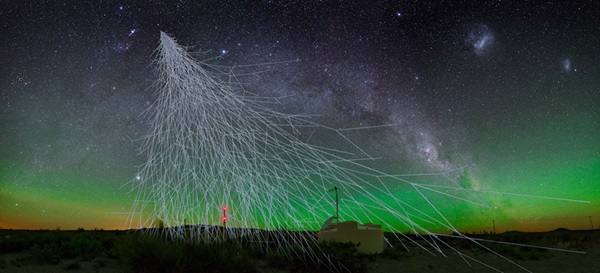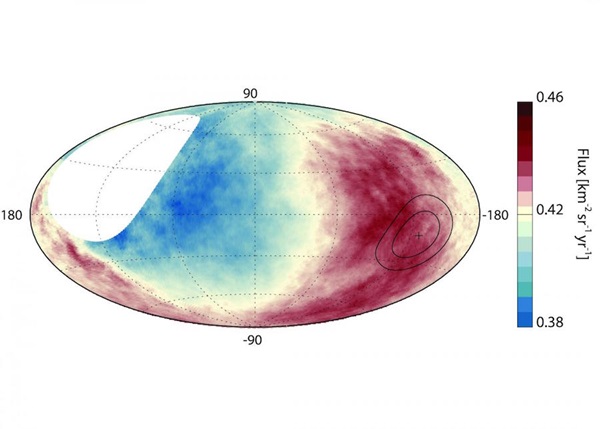Key Takeaways:
In the study, published September 22 in the journal Science, the researchers gathered over ten years of data taken with the Pierre Auger Observatory to determine whether high-energy cosmic rays were hitting Earth equally from all directions. They are not.
Instead, the researchers found an overabundance of cosmic rays arriving from one specific region in the sky, located about 120 degrees away from our galactic center, in a direction that falls outside the Milky Way’s disk and cannot be associated with any possible sources within the galaxy. The researchers concluded that high-energy cosmic rays must have extragalactic origins.
Identifying cosmic ray properties can help astronomers infer important information about the processes that occur within our galaxy and the universe as a whole, including the events that generate them and the structures they travel through to reach us. While lower-energy cosmic rays come from inside the Milky Way — including from our Sun, clusters of stars, and supernova events — the highest-energy cosmic rays have long been believed to originate outside our galaxy.
For the study, researchers concentrated their efforts on cosmic rays with energies over 8 x 1019 electron volts — which is a million times more energy than the Large Hadron Collider (LHC) pumps into a proton, or about as much energy as it takes to lift a laptop one foot above a table.
When a high-energy cosmic ray reaches Earth, it can strike and obliterate any unlucky molecule hanging out in our upper atmosphere. This initial collision starts a devastating chain reaction that cascades down through the atmosphere, ripping apart other molecules, producing what is known as an air shower. These air showers balloon out as they descend downward, and by the time they reach the ground, they can cover an area up to 10,000 acres (40 square kilometers) and contain over 10 billion secondary particles — such as electrons, photons, and muons.
The Pierre Auger Observatory, located in the Argentinian Pampas, does not detect cosmic rays directly. Instead, it observes the secondary particles from air showers using a massive array of over 1,600 individual detectors spanning nearly 1,200 square miles (3,000 square km).
Using a sample of 30,000 high-energy cosmic ray detections, the team found a broad region of the sky where the flux — or inflow of cosmic rays — was 6 percent higher than average. And that region lies outside the Milky Way’s disk.
Though a few percent may not seem like much, there is only a one in five million chance that the increase in flux observed was due to chance.
Unfortunately, the study was unable to pinpoint the precise location of the cosmic ray source. This is partly due to the fact that numerous galaxies crowd the broad region of sky where the increase was found, and partly because cosmic rays can be deflected by the Milky Way’s own magnetic field, which makes them extremely difficult to trace back through space.
Fortunately, the more energy a cosmic ray has, the less it is deflected by a magnetic field, so by studying ultra-high-energy cosmic rays, researchers should be able to constrain the location of the source even further. And by ultimately discovering the source of high-energy cosmic rays, astronomers hope to learn both where exactly they come from, and how they are generated with such great energies.












